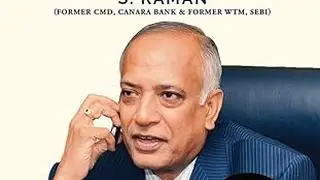The book, Journey of a Nation: 75 years of Indian economy, by Sanjaya Baru is aimed at introducing the post-millennials -- a generation that is reaching adulthood as India celebrates its 75th anniversary of Independence – to the history of the Indian economy from the time India won freedom.
Baru starts his story from the medieval times when India was at the centre of global trade and commerce, when its share of GDP, along with China, was close to 50 per cent and how the country became impoverished during the colonial period – elucidated first by Dadabhai Naoroji’s drain theory.
Two important developments took place in the 1930s and 40s -- the Congress Party formed the National Planning Committee and India’s leading industrialists formed the Bombay Plan.
Era of economic planning
It is remarkable to note that both the nationalist politicians and the leading industrialists of that era believed that some form of planning was needed to industrialise India quickly and pull people out of poverty. Thus began the era of economic planning in independent India.
Baru gives a detailed account of the debates on planning and state-led development in India and the leading personalities that framed them. This planning era also attracted worldwide attention and several leading Western economists took keen interest in India’s unique experiment with Parliamentary democracy and economic planning.
The 1950s were marked by rapid industrial development and the public sector, dominating a “mixed economy” framework, was established and growth also spiked. But the 1960s was a decade of crises – with the country fighting two wars, a looming food crisis -- all of which strained domestic and external finances, leading to a full-blown balance of payments crisis.
Baru is at his best when he contextualises the momentous economic decisions taken then – devaluation, bank nationalisation – within the political framework of those times and how the intra-Congress power struggle between the “radicals” and the “Syndicate” shaped the major economic decisions.
Baru then discusses how economic policy in the country shifted to the Left and then to the Right in the 1970s. The Leftward shift was marked by bank and insurance nationalisations, including that of coal and other sectors, and more controls on industry. With inflation running high and growth stuttering by the mid-seventies, there was a growing realisation that the ‘licence-permit-quota’ raj was only helping some industrialists and needed a relook. Some early signs of reforms were seen in the late 1970s, which were speeded up in the 1980s.
The 1980s marked a shift in the perception of the policy makers towards industry, when business leaders began to be viewed as partners in economic development. This was also a decade when the manufacturing sector recorded impressive growth, but thanks to gross fiscal mismanagement, the seeds of the 1991 balance of payments crisis were also sown.
Momentous reforms
Baru gives us a ringside view of the momentous 1991 reforms and his respect and admiration for PV Narasimha Rao and Manmohan Singh – the chief architects of reforms – is understandable (Baru has authored books on both Rao and Singh, and was a press advisor to the latter).
His description of how India pledged its gold to avoid default and how Rao used this crisis to effect deep-rooted reforms to liberalise the Indian economy is the most interesting part of the book.
There are separate chapters on the agrarian issue, industrial and services sector and “geonomics” -- how economic power is crucial for national security. Baru perceptively links the Northern and Eastern States’ lower social and economic indices in comparison to the western and southern states, to the differences in land tenure systems (zamindari vs ryotwari).
India’s unique leap from an agrarian to a services-led economy, bypassing the manufacturing stage, and the reasons why manufacturing’s share is stubbornly stuck at 16-17 per cent of GDP, are also analysed.
Baru paints a vast canvas in a mere 155 pages in this lucid, jargon-free book, where data is kept to the minimum. This book is a must-read for the post-millennial generation interested in the political economy of independent India’s 75-year journey.
Check out the book on Amazon here








Comments
Comments have to be in English, and in full sentences. They cannot be abusive or personal. Please abide by our community guidelines for posting your comments.
We have migrated to a new commenting platform. If you are already a registered user of TheHindu Businessline and logged in, you may continue to engage with our articles. If you do not have an account please register and login to post comments. Users can access their older comments by logging into their accounts on Vuukle.